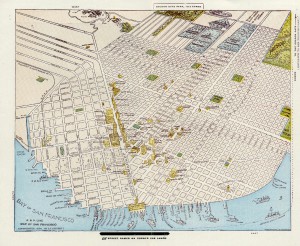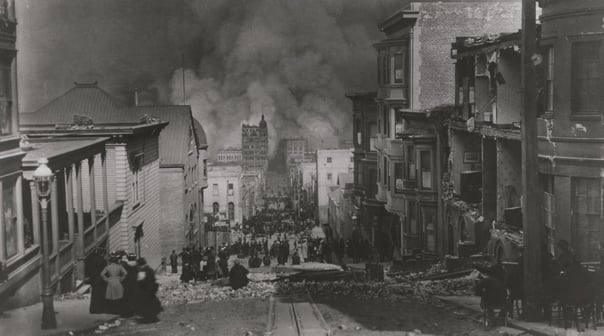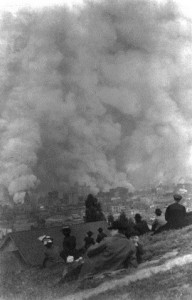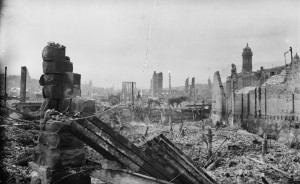A few days ago at Vita Brevis, we heard from Andrew Krea on genealogical research running up against natural disasters. The consequent uptick in valuable family information appearing in periodicals and public records, as relatives and associates seek contact with those affected or provide refuge to survivors, provides an unintended boon in documenting extended family groups and far-flung kin. Such events may also supply an explanation to a point of family lore. A natural disaster and a bit of lore in my own family led me to encounter a genealogical project that is worthy of greater attention.
 Several families in my mother’s ancestry followed the sea at the turn of the twentieth century. While the older generation anchored the families on the East Coast, children and in-laws established themselves in San Francisco. My relatives were not unique in doing this. Native-born Americans as well as enterprising immigrant groups engaged in similar behavior, making the San Francisco of 1900 one of America’s most populous and cosmopolitan cities.
Several families in my mother’s ancestry followed the sea at the turn of the twentieth century. While the older generation anchored the families on the East Coast, children and in-laws established themselves in San Francisco. My relatives were not unique in doing this. Native-born Americans as well as enterprising immigrant groups engaged in similar behavior, making the San Francisco of 1900 one of America’s most populous and cosmopolitan cities.
There, in the early morning of 18 April 1906, a great earthquake struck, unrivaled as a U.S. disaster until Hurricane Katrina in 2005; it was followed by fires that burned for days. The memory of a sibling – an aunt, with her family, in the calamity that destroyed three-quarters of San Francisco, was transmitted through four generations of my mother’s family. Lacking a contemporary and conclusive account of the casualties – the city itself released a deliberately reduced estimate to ease repopulation concerns – the anxious advertisements placed by relatives in newspapers for years thereafter make it clear that many questions went unanswered.
My mother, a skillful, lifelong family historian, dutifully recorded the independent recollections of several of her most senior relatives in the mid-1970s. As genealogists, we accept such records as family lore. We test them, seeking primary sources on the disaster and correlating the records found with points of information from the oral history. Did our ancestor’s sister and her family live in the disaster area? Could any record of them be found sometime after the earthquake? In census records and directories, my mother and I found that she lived by the north side of Nob Hill, right in the heart of the destruction. No trace of her was found after 1905. So, where was some notice, some listing of her demise?
As it happens, we were not the only descendants and family members still seeking to put names and faces to the lives lost in the Great Earthquake and the catastrophic fires that then consumed the city. The Museum of the City of San Francisco maintains a database, a “Great Register” of the names of all those who, research demonstrates, died that day in 1906 and in the terrible year that followed. The museum also leads efforts to collect oral history of the tragedy retained by present-day families and to gather artifacts of the event. The “Great Register” project also has an online presence at The Virtual Museum of the City of San Francisco. We encourage you to contribute to this important genealogical effort by finding your San Francisco relatives, analyzing how they might have been affected by the cataclysm, and telling the story of our American ancestors and families.
Share this:
About Christopher Carter Lee
Christopher Carter Lee completed undergraduate studies in international relations at Georgetown University in Washington, D.C., where he focused on culture and politics. He previously worked in foreign policy research, special projects and development for a U.S. Senate office, and as a political consultant, appearing on CNN's Crossfire. More recently, he built his own hired genealogical research practice while consulting in program development before joining NEHGS Research Services. He holds a Certificate in Genealogical Research from Boston University and has extensive knowledge of Maryland, Virginia, Southern U.S., and Southeastern American Indian genealogy, the Catholic Church in North America, and expertise in Italian, French, Polish, Russian, and other European research, nobility, heraldry, and history.View all posts by Christopher Carter Lee →



